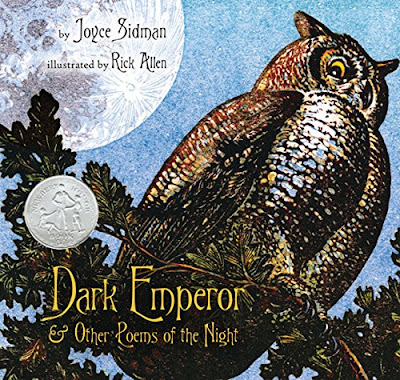Echo Echo: Reverso Poems About Greek Myths

Bibliography: Singer, Marilyn. Echo Echo: Reverso Poems About Greek Myths . Ill. by Josée Masse. New York: Dial Books for Young Readers, 2016. ISBN: 978-0803739925 Summary: In this collection of poems, Marilyn Singer briefly recounts twelve Greek myths using reverso poetry, a type of poem invented by Singer herself. After an introductory poem entitled “The Age of Marvelous Myths,” the poems tell the tales of Pandora, Arachne and Athena, King Midas, Perseus and Medusa, Narcissus and Echo, and more. Below each poem is a short synopsis of the myth--just enough to get the gist. The book concludes with a poem called “Gods and Mortals” followed by an author’s note sharing background information about Greek mythology and the unique style of reverso poetry. Analysis: If you’ve never heard of reverso poetry, it is a clever style of poem construction in which there are two versions of the same poem: one is read from top to bottom, and the second poem arranges the same lines in reverse orde...




